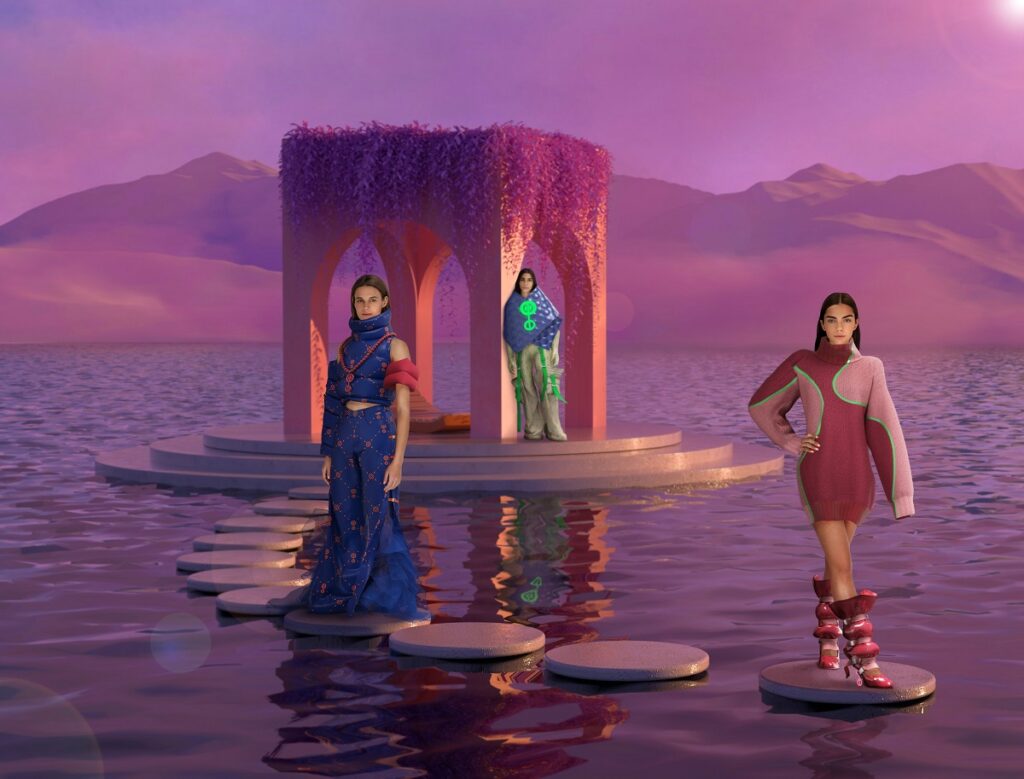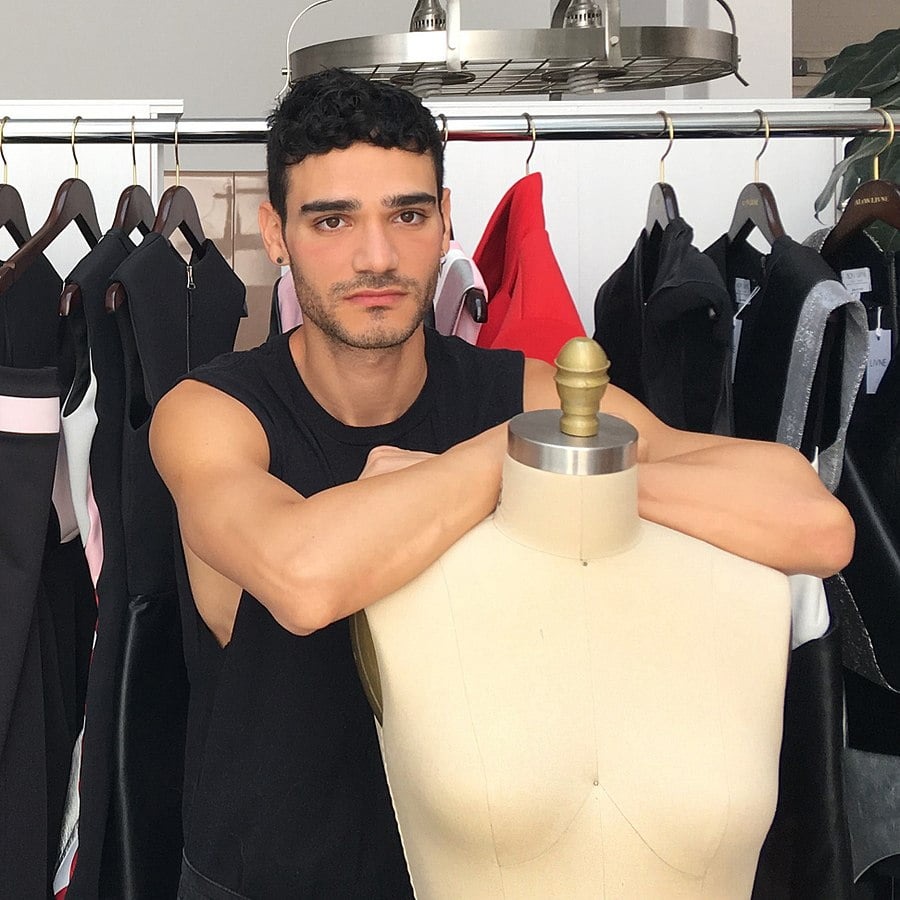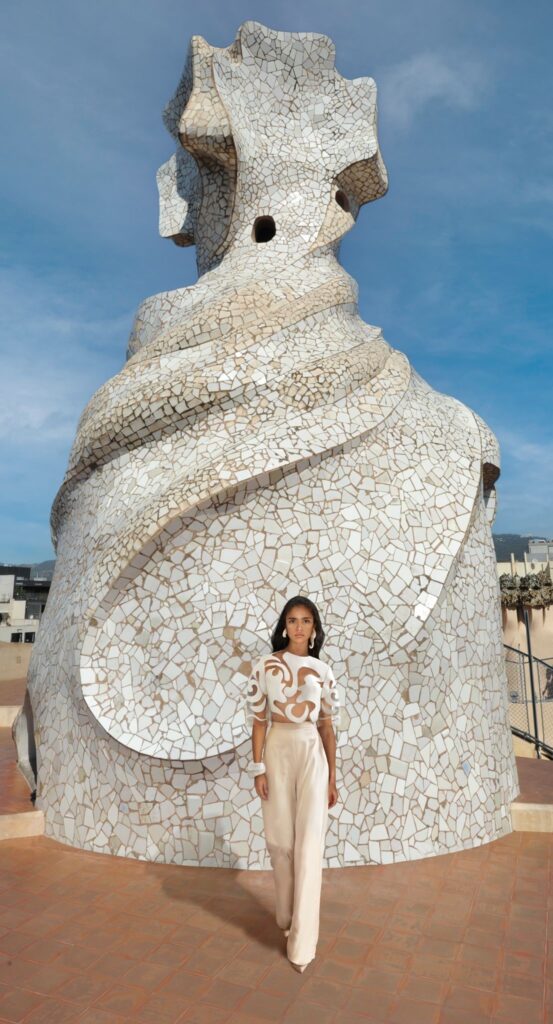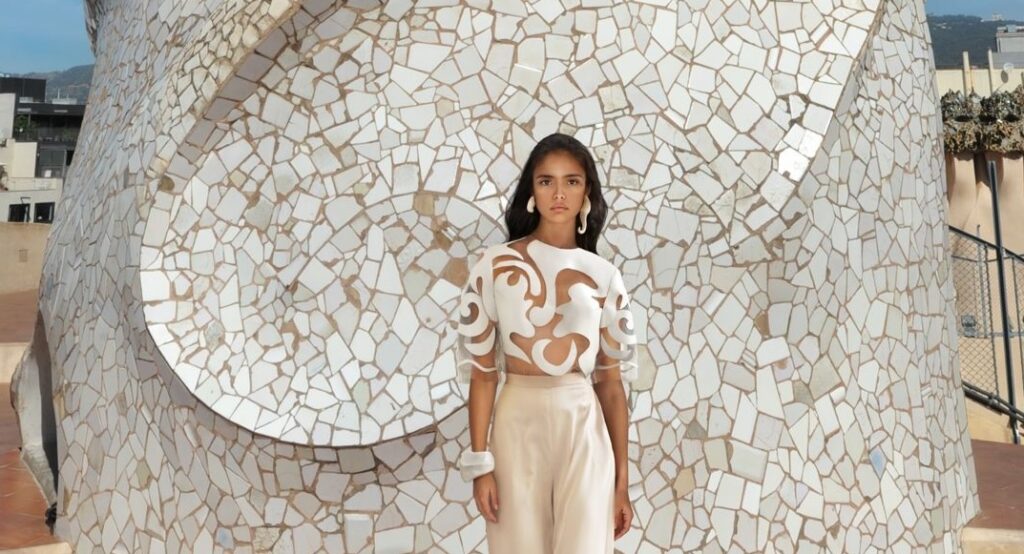When Israeli fashion designer Alon Livne, who has dressed the likes of Lady Gaga, Beyonce, and Kim Kardashian, had a difficult time getting to Spain to shoot his latest fashion campaign, he decided to showcase his statement pieces with the help of a virtual model.
For his Fall/Winter 2022 collection, Livne created a sculptural array of designs inspired by Catalan architect Antoni Gaudi, known for designing intricate structures throughout Barcelona in a Catalan Modernism style.
Livne collaborated with Styletech, an Israeli startup that creates strikingly realistic virtual models using automated AI technology. The company, co-founded by fashion expert Goni Grupper, Tal Melenboim, and Omer Erlichman, originally set out to eliminate the need for costly and time-consuming photo shoots, by creating virtual catalogs and lookbooks for brands.

“The problem is that companies — fashion brands in particular — spend a lot of money, a lot of resources, and a lot of logistical hassle in order to make their lookbooks. They have to get models. They have to get a stylist, makeup, hair, photographer. They need a location. Everything is very manual and it takes a long time. I wanted things to be simplified,” Grupper tells NoCamels.
“So Tal and I got together and we developed an AI solution that basically does two things. One is creating the models. We have a huge catalog of models of every size and shape and age. We have kids. We have babies. They’re very hyperrealistic,” she adds. Hyperrealism is art that resembles a high-resolution photograph.
Styletech currently has a database of some 20,000 models. Brands can choose gender, expression, height, weight, shape, age, hair color, and skin tone. The models were created by using AI combine with tech that precisely maps the human body.
“We don’t have a set number of models because we haven’t finished — we always aim to create more and more and more. So even if brands need a model specifically that looks like they’re a presenter or fit to their brand or clients, we can make it.

“The second unique aspect of Styletech’s solution is that customers can dress the models with their own creations. “You can take a photo of your shirt or top and at the press of a button, our model can wear it,” Grupper says, “You can get a hyperrealistic result here as well. We take into consideration the fabric, the shape of the outfit, and more. I think this is one of the most important things that we wanted to do in order to help sell the clothes.”
Grupper tells NoCamels that it was very important that the models be as realistic-looking as possible. “We have competitors and their models look like avatars. I really wanted to do something the fashion industry can use,” she says, “I mean, that basically if you go online and you want to buy a dress, you need to relate to the model, you need to find somebody that is a person, not a doll or an avatar, like in Call of Duty or Fortnite.”

The catalog includes diverse looks, various skin tones, plus-size models, and models with disabilities, Grupper says. “One of the most important things that we have done to make them really realistic is making little imperfections,” she explains, “That’s what makes us human We have scars. If we are doing eyes, or even breasts, we can make one bigger, one smaller. But that’s what makes us human, you know? We’re not perfect. Our symmetries are not perfect.”
Sign up for our free weekly newsletter
SubscribeAlon Livne x Styletech
As many of the pieces created by Alon Livne for his Fall/Winter 2022 collection “Evangeline” had clay sculptural elements inspired by Gaudi’s architecture, Livne’s goal was to photograph his collection’s fashion campaign next to Gaudi-built structures in Spain, but he was met with all sorts of logistical challenges, Grupper explains. The trip was expensive and it was far away. Then it became difficult to get there and get authorization to photograph in those buildings. Plus, there was the whole process of makeup, hair, and finding the right photographer.

“With Styletech, he understood that he can do whatever he wants. He can pick the scenario, he can pick the model,” Grupper says, noting that Livne wanted to create an exotic model with Indian or Eastern features.
“This was more of a campaign,” Grupper says,”Styletech usually creates lookbooks but we also have the ability to create for special occasions. We got the makeup that he wanted, the hair that he wanted, the mold that he wanted. The height, the shape, the colors, the lighting that he wanted — he was like, ‘I want it to be afternoon, I want it to be sunny outside. Those kinds of specified requests.”
“For me, flying to Spain is not relevant now,” Alon Livne said in a statement, “I chose the model I wanted, and the location. It’s new for me to create something without leaving home. I wanted a model in an exotic shade. Ethnic. I spoke to the designers in the same language I would speak to a modeling agency. There is no model like this in Israel. The computer created the design I had in my mind.”
“Why virtual models? The world is going in a new direction. I find it interesting to be part of this field,” he added.
Only in its first year of operation, Styletech is already working with a number of fashion brands, including Israeli fashion brands Urbanica and Afrodita. The company is also creating models of various shapes and sizes (including plus-size) for an international, luxury lingerie brand, Grupper says.
“Our models are so lifelike, the customers probably don’t even know that they are digital,” she says, “Their stuff was sold out in the first week they used us.”
Virtual models are here to stay, but will they take over the future of fashion? Grupper chimes in, “I think [physical] modeling is going to stay a part of this world. I don’t think it will vanish. I think it’s going to continue to be very creative. I think the campaigns will continue to be very big, but the lookbooks and the small campaigns will move on and become digital. I think that’s our world. Everything is moving fast and becoming very techie. I think the fashion world will have no choice but to go in this direction. I really want to be a part of this change.”
Related posts

Editors’ & Readers’ Choice: 10 Favorite NoCamels Articles

Forward Facing: What Does The Future Hold For Israeli High-Tech?

Impact Innovation: Israeli Startups That Could Shape Our Future




Facebook comments